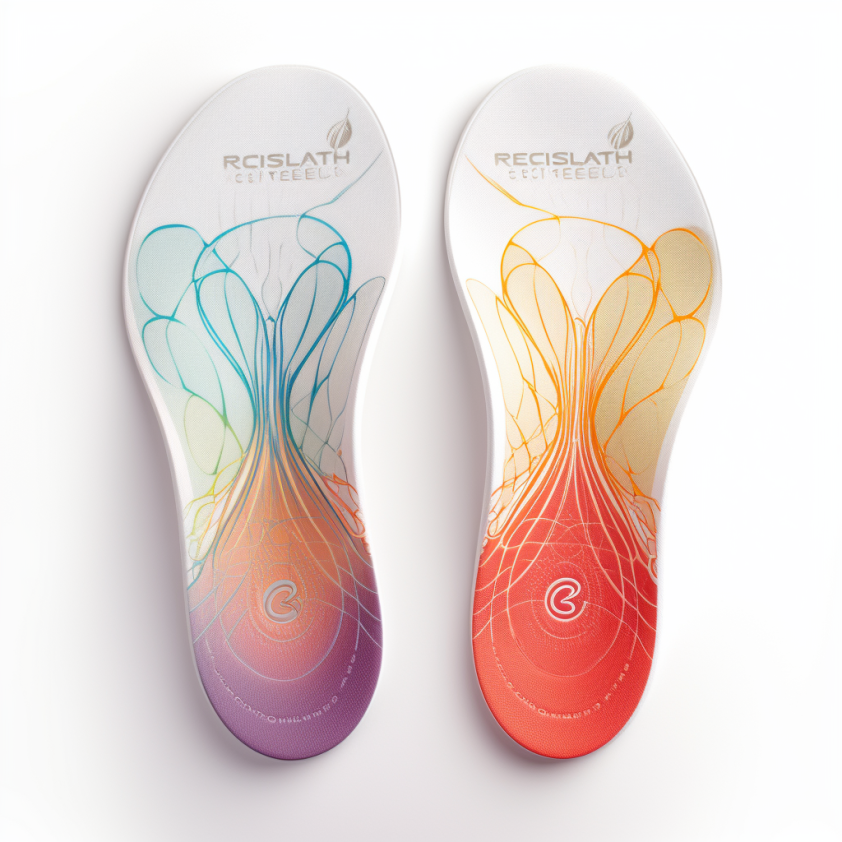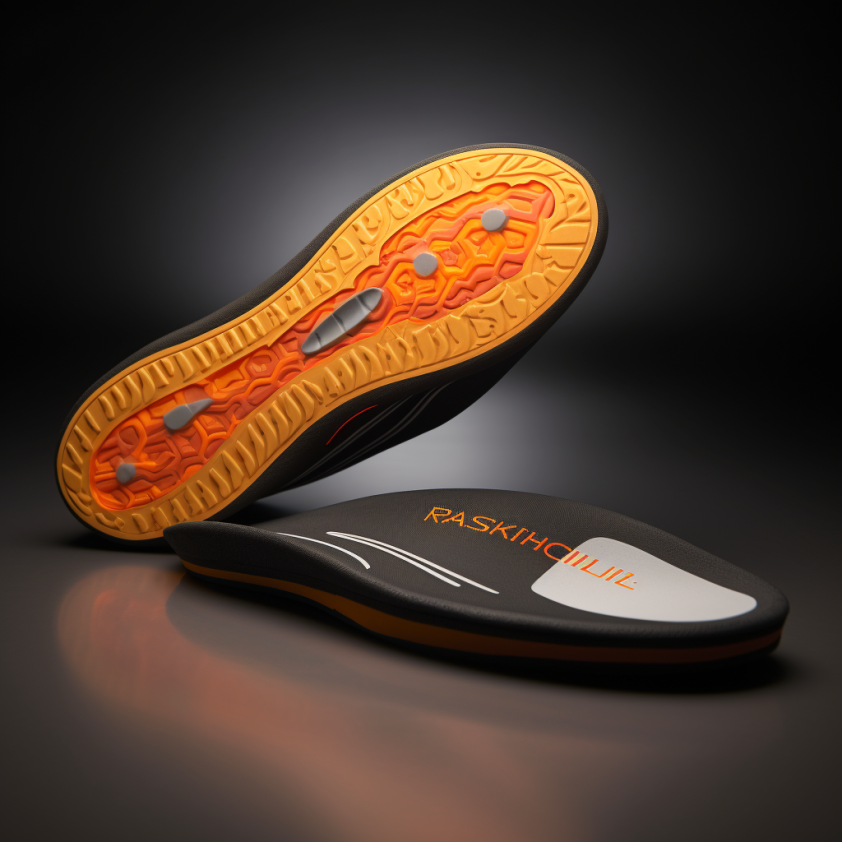Best Shoe Insoles: Enhancing Comfort and Performance
Shoe insoles, also known as footbeds or inserts, are an often overlooked yet vital component of footwear. They play a crucial role in providing support, cushioning, and alignment to the feet, contributing to overall foot health and comfort. Whether you are an athlete looking to boost performance, a worker seeking relief from foot pain, or simply someone who spends extended periods on their feet, the right the best insoles for arch support like https://easyfeet.store/products/black-model can make a significant difference. In this comprehensive guide, we will explore the benefits of insoles, the conditions they are suitable for, the different types available, and the best options on the market to help you make an informed decision for your specific needs.
What are Insoles and What are They Good For?
When it comes to insoles, the choice of material plays a significant role in their performance and effectiveness. Different materials offer varying levels of support, cushioning, and durability. Here are some common materials used in insole construction:
Gel Insoles: Gel insoles are known for their exceptional shock-absorbing properties. They provide excellent cushioning and can effectively reduce impact forces during high-impact activities. Gel insoles are ideal for athletes and individuals with joint pain or arthritis.
Memory Foam Insoles: Memory foam molds to the shape of the foot, providing personalized support and comfort. These insoles are popular for their ability to relieve pressure points and offer a plush feel during extended wear.
EVA (Ethylene-vinyl acetate) Insoles: EVA is a lightweight and flexible material that provides moderate cushioning. It offers a good balance between comfort and support, making it suitable for various activities and foot types.
Leather Insoles: Leather insoles are durable and provide a natural, breathable option for added comfort. They conform to the foot over time, offering personalized support.
Cork Insoles: Cork is another natural material that provides excellent shock absorption and arch support. It is often used in custom orthotic insoles due to its ability to mold to the foot's shape.
Polyurethane Insoles: Polyurethane insoles are known for their long-lasting durability and resistance to compression. They provide consistent support for people with high arches or who require firm support.
Insoles for Different Footwear
Insoles can be used in various types of footwear, from athletic shoes to dress shoes and work boots. Some insoles are specifically designed for certain types of footwear to cater to different activities and occasions:
- Running Insoles: These insoles are engineered to enhance shock absorption and provide optimal support during running. They often have additional features like moisture-wicking materials to keep feet dry.
- Work Boot Insoles: These insoles are designed to withstand the demands of labor-intensive jobs. They provide ample cushioning and support to reduce fatigue and foot pain during long hours of standing or walking.
- Dress Shoe Insoles: Dress shoes often lack proper arch support and cushioning. Dress shoe insoles are thin and discreet, fitting comfortably into formal footwear to add support without compromising style.
- High Heel Insoles: High heels can put excessive pressure on the ball of the foot. High heel insoles help distribute weight more evenly and provide additional cushioning to improve comfort.

Replacing Insoles
Insoles are subject to wear and tear over time, especially if they are used frequently or during intense activities. It's essential to monitor the condition of your insoles and replace them as needed to maintain their effectiveness. On average, insoles should be replaced every six to twelve months, but this may vary based on usage and the materials used.
Conditions for Wearing Insoles
Insoles offer versatile benefits that cater to a wide range of individuals and activities. Whether you are an athlete, a professional on your feet all day, or someone seeking relief from foot pain, there's an insole suitable for your specific needs. Here are some common scenarios where wearing insoles is recommended:
- Athletes: For athletes, having the right support and cushioning can make a significant difference in performance and injury prevention. Performance-oriented insoles are designed to optimize shock absorption, stability, and overall comfort during intense physical activities. They help reduce the impact on joints and muscles, allowing athletes to perform at their best without compromising on foot health.
- Foot Pain: Foot pain can be debilitating and hinder daily activities. Conditions like plantar fasciitis, flat feet, bunions, and metatarsalgia can cause significant discomfort. Supportive insoles with targeted cushioning and arch support can alleviate pain and provide relief. They redistribute pressure on the foot, promote proper alignment, and reduce strain on affected areas, allowing individuals to engage in regular activities with less pain and discomfort.
- Occupational Use: Professions that involve prolonged periods of standing or walking, such as healthcare professionals, retail workers, and construction workers, can put a strain on the feet. Insoles designed for occupational use offer additional support and cushioning, reducing fatigue and discomfort associated with extended hours on hard surfaces. These insoles provide valuable relief, enabling workers to stay more focused and productive throughout their shifts.
- High-Impact Activities: Runners, jumpers, and individuals engaging in high-impact activities place significant stress on their feet and lower limbs. High-quality insoles with advanced shock-absorbing materials can absorb and disperse impact forces, reducing the risk of injuries like shin splints and stress fractures. They also provide stability and proper foot alignment, optimizing performance and recovery.
- Casual Wear: Insoles are not limited to athletic or work-related footwear. Even for everyday casual wear, using insoles can enhance comfort and support. Whether it's strolling through the city, running errands, or standing for extended periods, insoles provide an extra layer of cushioning, making daily activities more enjoyable and less taxing on the feet.
- Overpronation or Supination: Individuals with overpronation (foot rolls inward) or supination (foot rolls outward) can benefit from insoles with corrective features. These specialized insoles help realign the foot and ankle, reducing the risk of injuries and improving overall foot mechanics.
- Diabetes and Neuropathy: People with diabetes or neuropathy often experience foot sensitivity and reduced sensation. Insoles designed for diabetic foot care offer extra cushioning and protection to prevent pressure points and reduce the risk of ulcers and foot injuries.
Types of Insoles and Their Purposes
There are various types of insoles available, each designed to address specific foot conditions or activity requirements. Let's explore some common types and their purposes:
Cushioned Insoles: These insoles are made of soft, shock-absorbing materials like gel, foam, or air pockets. They are excellent for providing overall comfort and reducing impact forces during activities.
Arch Support Insoles: Ideal for individuals with flat feet or fallen arches, these insoles offer targeted support to the foot's arch, promoting proper alignment and reducing strain on the plantar fascia.
Orthotic Insoles: Custom orthotic insoles are specially designed to match the contours of an individual's feet. They provide personalized support for various foot conditions, offering relief from specific foot problems.
Heel Cups and Cushions: These insoles focus on providing extra cushioning and support for the heels, making them effective for conditions like plantar fasciitis and heel spurs.
Metatarsal Pads: Metatarsal pads are placed under the ball of the foot to relieve pressure and pain caused by conditions like metatarsalgia.
Sport-Specific Insoles: Tailored to different sports, these insoles provide specialized support, stability, and shock absorption to enhance athletic performance.
The Best Options Available on the Market

The market offers a plethora of insole options, each catering to specific needs and foot conditions. Let's explore some of the best-rated insoles available:
Superfeet GREEN Full-Length Insoles: Superfeet GREEN insoles have garnered a reputation for providing exceptional arch support and stability for various foot types. These insoles are particularly beneficial for individuals with medium to high arches, as they promote proper foot alignment and alleviate strain on the plantar fascia. The GREEN model offers all-day comfort, making them a popular choice for both casual wear and athletic activities.
Powerstep Original Full-Length Orthotic Shoe Insoles: Powerstep is a renowned brand known for its orthotic insoles, and their Original model stands out for its effective support and cushioning. These insoles are specifically designed to target foot pain and conditions like plantar fasciitis. With a focus on providing optimal arch support and shock absorption, the Powerstep Original insoles offer reliable relief for those dealing with foot discomfort.
Sof Sole Airr Orthotic Performance Insoles: Engineered with athletes in mind, Sof Sole Airr Orthotic Performance insoles are a favorite among active individuals. These insoles combine superior cushioning with a gel heel insert, ensuring enhanced shock absorption during high-impact activities like running and jumping. The Airr technology provides responsive support, reducing stress on the feet and lower limbs during intense workouts.
Dr. Scholl's WORK Massaging Gel Advanced Insoles: Designed for individuals who spend extended periods on their feet, Dr. Scholl's WORK Massaging Gel Advanced Insoles offer comfort and support for long-lasting wear. The massaging gel technology provides extra cushioning, minimizing fatigue and discomfort during long work shifts. These insoles are a practical choice for various occupational uses, including healthcare professionals, retail workers, and others in physically demanding roles.
Spenco Polysorb Cross Trainer Athletic Cushioning Arch Support Insoles: Athletes and active individuals seeking both comfort and stability will find the Spenco Polysorb Cross Trainer Athletic Insoles to be an excellent option. These insoles feature targeted cushioning and arch support, making them ideal for running, cross-training, and other sports. They help absorb shock and reduce impact forces, protecting the feet and enhancing overall performance.
EasyFeet Plantar Fasciitis Arch Support Insoles
Another notable addition to the list of top-rated insoles is the EasyFeet Plantar Fasciitis Arch Support Insoles. These insoles are specifically designed to address foot pain associated with conditions like plantar fasciitis, flat feet, and overpronation. They offer targeted arch support and cushioning to relieve strain on the plantar fascia, providing effective pain relief and promoting proper foot alignment.
EasyFeet insoles are made with high-quality materials that ensure durability and long-lasting performance. The combination of medical-grade EVA foam and gel pads offers excellent shock absorption, reducing impact forces during activities. These insoles are also designed with a deep heel cup, providing stability and support for the heel and preventing excessive pronation.
Moreover, the EasyFeet Plantar Fasciitis Arch Support Insoles feature a moisture-wicking fabric that keeps the feet dry and odor-free, even during extended use. The breathable design ensures optimal airflow, enhancing overall foot comfort throughout the day.
Choosing the right shoe insoles is essential for enhancing comfort, addressing foot-related issues, and improving overall foot health. Whether you're an athlete seeking to optimize performance or someone dealing with foot pain, there's an insole that fits your specific needs. Consider factors such as arch type, foot condition, and activity level when selecting the best insoles for you. Remember that proper footwear and insole care are crucial for getting the most out of your investment. Always consult with a healthcare professional if you have severe foot issues or concerns before using insoles. By making informed choices, you can step into a world of enhanced comfort and foot well-being.